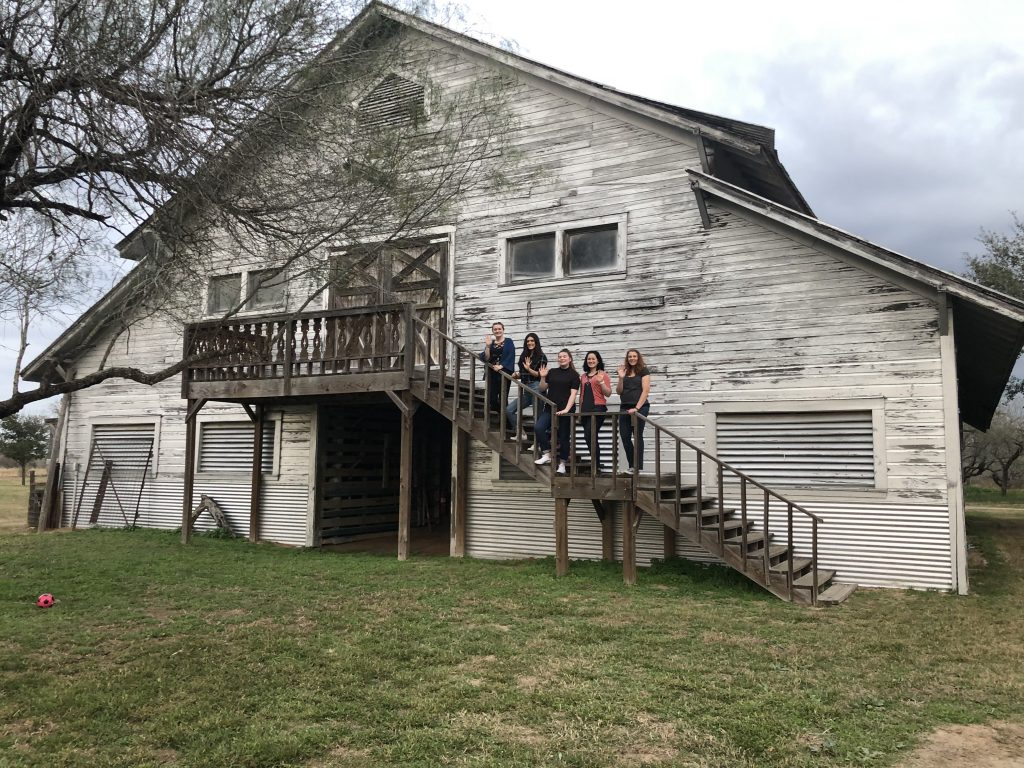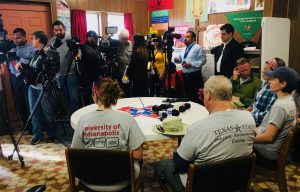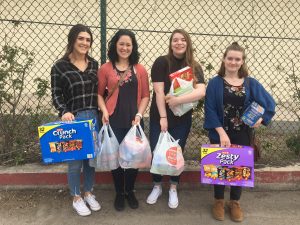
Today was very different than the last four days we have experienced. We were able to take a day and rest our bodies, so we could be fully recharged to continue searching for the unidentified at Sacred Heart Cemetery tomorrow. However, the true purpose of this day was to take some time to immerse ourselves in the other side of the humanitarian crisis occurring at the US-Mexico border. The side that we are used to includes the sadness of previously voiceless decedents who died in search of a better life, but our experiences today extended beyond that. We found that the side in which you interact with the people living with the consequences of US immigration policy are equally heartbreaking in so many ways. Last night, the UIndy team purchased a few bags full of useful food items and supplies that we wanted to donate to the Humanitarian Respite Center operated by the Catholic Charities of the Rio Grande Valley. Today we were fortunate to be able to bring our donations to the center and receive a brief tour of their facility.
I have never woken up wondering if I would be pulled away from my family and held in a detention center. I have never feared that my family would be deported, that I would lose the progress of my education, that I would never see my home again, or my family, or my friends at school. Today I saw some of the sweetest and happiest children in the middle of some of the most difficult moments of their lives. I saw exhausted parents who had been desperately holding their family together after days in an ICE detention center, hoping to be granted asylum in this country. There were women and children who just wanted a meal and some guidance before heading on their way. They were helpful and grateful for the assistance, not greedy. They were lost in an unfamiliar place. They were non-English speakers. They were in need of bus tickets back to their family members. I tried not to think about it too much in fear that I would start crying. It was deeply heartwarming to see that so many people in the community volunteer their time and resources to help keep this operation running to serve vast numbers of people on a daily basis.
After leaving the Respite Center, we headed over to the border wall. This was my second time seeing it and it still gave me chills. The Rio Grande River marks the official border between countries, but there are tall walls with barbed wire or massive, rusty metal fences on the US side of the land by the river.
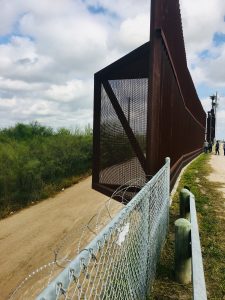
Within 90 seconds of walking over to the wall, a Border Patrol truck rolled up on us to interrogate our purpose in the area. He left us alone after hearing that we were white folks from Indiana just interested in seeing the wall, but I know he kept watch from afar. There was a broken ladder, probably from the journey of one traveler as he/she shimmied up and over this 20-foot fence.
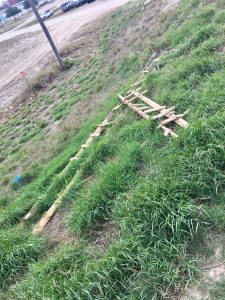
We imagined the fear and adrenaline coursing through someone’s blood as they committed to this risky journey knowing they too, may only have 90 seconds before Border Patrol discovered them. Yet, all we could do was gaze at the other side of the fence, never knowing what it would feel like to make a run for our lives that could determine our future or the well being of our families in a faraway home.
The end of our day was marked by the most wonderful dining experience. Peggy and Bill Clark invited the entire team of volunteers to their house for dinner at their beautiful ranch home. We were able to gain some insight into the other side of the Falfurrias community; the thoughts, experiences, and daily lives of those outside our immediate circle of human rights volunteers. We arrived early to help set up and were incredibly thankful to develop relationships with the two of them. Peggy’s grandfather founded the town of Falfurrias, so she shared some incredible stories and family photos with us. Overall, they were just honest, kind, fascinating people who welcomed us into their homes with open arms and wanted to get to know us. I hope to be able to see them again in the future and value the conversations I was able to share with them.
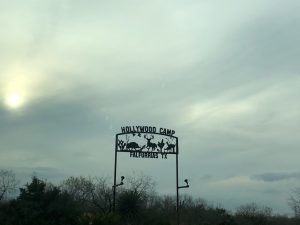
There is a quote from Sister Norma Pimentel, the director of Catholic Charities of the Rio Grande Valley. She says, “Helping another human being is never wrong. It is never a wrong thing to do.” That really resonates with me, and I hope that people of all backgrounds can see the good in humanitarian work being done. I know we all learned a lot today, and I look forward to everything else to come.
